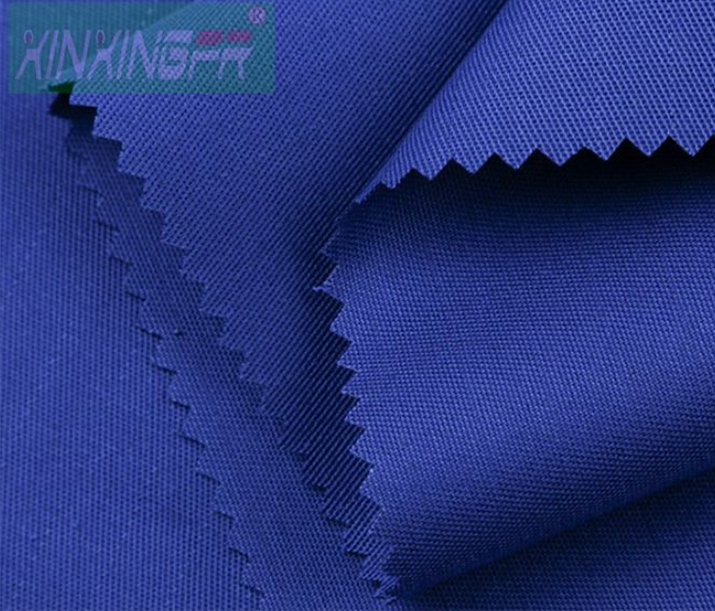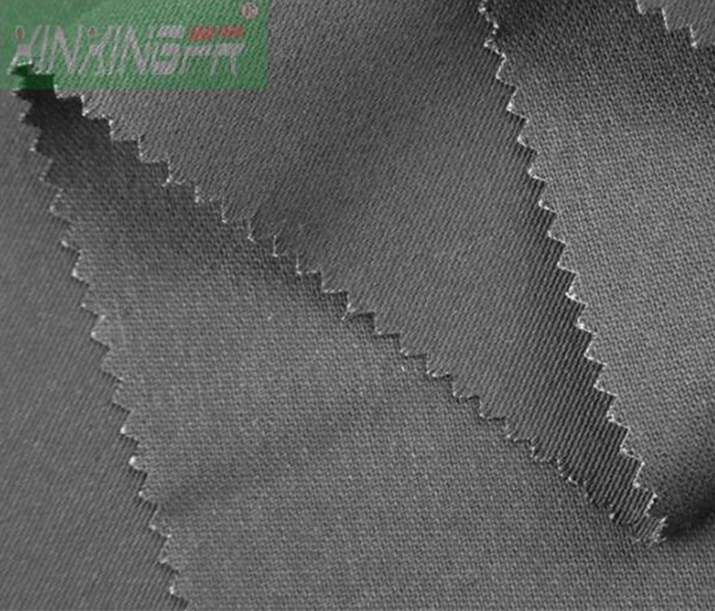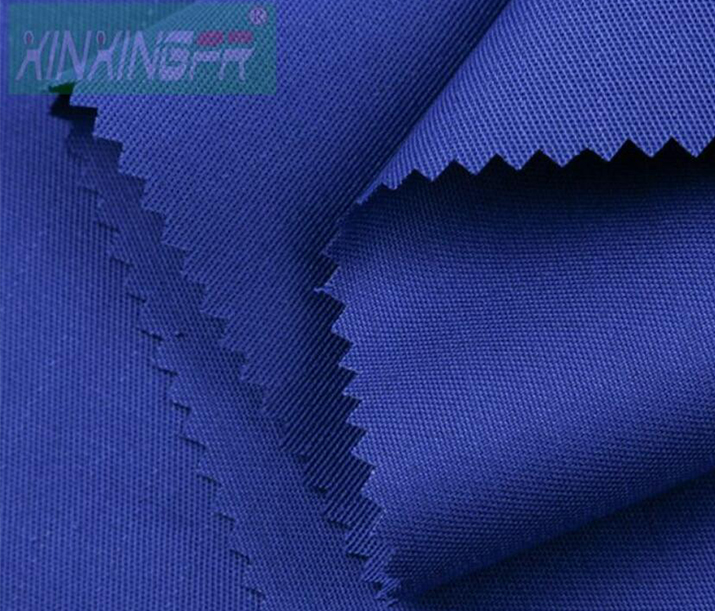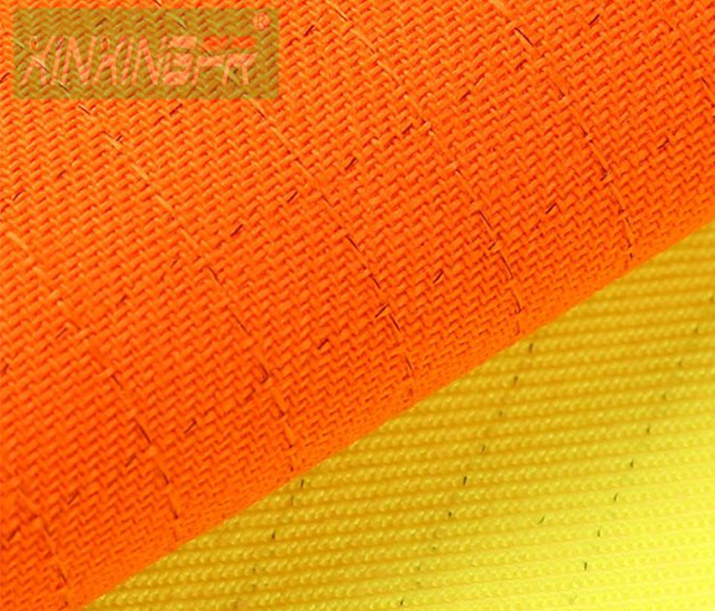Flame resistant (FR) and arc rated (AR) fabrics are used to manufacture FR clothing, which is worn by workers in many industries as the "last line of defense" against serious injury from arc flash, flash fire, molten metal, and combustible dust. These fabrics are self-extinguishing; they do not ignite and continue to burn once the heat source is removed, and they do not melt.
All FR fibers and fabrics in common use in the USA today are engineered by people, using chemistry. While increased innovation in the industry has put more brands and compositions of FR fabric on the market than ever before, most FR fabrics fall into two categories: inherent and treated.
100% Cotton FR Fabric
Inherently FR fabrics are knit or woven from fibers that have flame resistance built into their chemical structures. Interestingly, while the word inherent denotes a core property, or something that is innately and naturally a part of the whole, all inherent fibers in use today are engineered by humans. Because the FR engineering is done during creation of the fiber itself and is an inseparable part of the fiber, the flame resistance of garments manufactured from inherent fiber is permanent. Common and popular inherent fibers include aramids (Nomex®, Kevlar®, Glenguard and others), modacrylics (FRMC®, DH, DuPont MHP, Tecasafe®), and carbon fibers (Tecgen®).
Treated fabric begins as a product that is flammable (typically a cotton or a cotton rich blend) and then flame retardants are engineered into the fabric to create flame resistance. There are a number of different treated technologies being used in the world today, and the best of these technologies create a flame resistant polymer inside the hollow core of the cotton fibers—producing fabrics that are guaranteed FR for the life of the garment.
FR Knitted Interlock Fabric
To understand FR fabric engineering, it is first important to understand fire. Fire is the product of a chemical reaction requiring heat, fuel, and oxygen. All FR fabrics (inherent and treated) are engineered to remove or reduce the presence of one or more of those components by interrupting the combustion process. Combustion is the chain reaction of heat breaking down material into fuel, which reacts with oxygen to create more heat, breaking down the material into more fuel, and so on. Depending on the type of FR fabric, this process can be interrupted by removing the fuel source, removing heat from impacting the fabric, or displacing oxygen. Most common FR fabrics char instead of burning, which acts to both remove fuel and block heat, and modacrylic fabrics also contain an active process that displaces oxygen. While the science of combustion and FR fabric is highly technical, understanding the properties of fire can provide the building blocks for greater insight into FR fabric technologies.
There are multiple technologies of inherent fibers, and each uses a different process to create flame resistant fabric. Some inherent fibers, like modacrylic, use a gas-phase technology. Gas-state technologies extinguish flame by forming a type of molecule called a free radical oxygen scavenger in the gas layer above the fabric and suffocating the fire, preventing further decomposition and creation of fuel. Other inherent fibers, such as aramids, are thermally stable and act in the solid phase—meaning their molecular structure resists decomposition to high temperatures, then forms a friable char. This interrupts combustion by preventing the creation of fuel.
Most modern types of treated FR fabric also act in the solid phase, causing the fabric to char instead of burning when exposed to heat—reducing the amount of fuel available and extinguishing the fire.
With the drastic improvements and innovations made in FR engineering over the years, differences between the durability of flame resistance and protective qualities of inherent and treated fabrics have essentially disappeared, at least among the major US manufacturers. A worker wearing FR clothing made from inherent or quality treated fabric will be well protected for the life of the garment. And, home laundering is easier than ever, as manufacturer recommendations are the same for both inherent and treated garments—no liquid chlorine bleach and no fabric softener.
Nowadays, choosing between the two types of fabric most often comes down to worker preference—namely comfort, durability of the garment, and value. We are an FR fabric supplier. If you are interested in our products, please contact us now!




+86 135 9869 3034 (Ada)
South Fenghua Road, High-Tech Industrial Development of Xinxiang, Henan PC, China.
Copyright © Xinxiang Xinxing Special Fabric Co., Ltd. All Rights Reserved. Sitemap | Powered by 
SEOKeywords: Custom Flame Resistant Fabrics Flame Resistant Fabrics Application Flame Retardant Knitted Fabrics & Fleece 2024 Flame Resistant Knitted Fabric Fire Retardant High Visibility Workwear Fire-Resistant Fabrics: Understanding Fire Retardant vs. Fire Resistant Fire-Resistant Fabrics: Understanding Fire Retardant vs. Fire Resistant Fire-Resistant Fabrics: Understanding Fire Retardant vs. Fire Resistant Nomex Flame-Retardant Knit Modacrylic Flame-Resistant Fabric Firefighter Protective Clothing Fabric Military Flame-Resistant Apparel Fabric